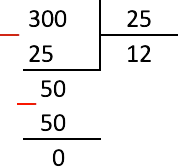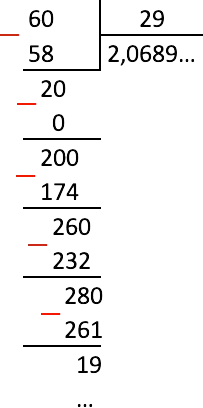In this publication, we will consider how an integer natural number can be divided into a decimal fraction (column). We will also analyze examples to consolidate the presented theoretical material.
Rule for dividing a number by a decimal fraction
To divide an integer divisible by a decimal divisor:
- we turn the fraction into an integer by multiplying by 10, 100, 1000, 10000, etc. How many digits after the decimal point – so many zeros in the multiplier.
- multiply the dividend by the same number.
- then perform division by a column of two numbers.
- the result can be either an integer or a new decimal fraction (finite or infinite).
Note: the same rule can be used to .
Examples
Example 1: we find the quotient of dividing 3 by 0,25.
Decision:
To turn 0,25 into an integer, it must be multiplied by 100, i.e.:
0,25 ⋅ 100 = 25
The same action for the dividend:
3 ⋅ 100 = 300
Now let’s just divide one number by another:

Example 2: divide the number 6 by 2,9.
Decision:
The number 2,9 is multiplied by 10 to make it a whole number.
2,9 ⋅ 10 = 29
The same action for the number 6:
6 ⋅ 10 = 60
It remains only to perform the division:

In this case, in particular, we stop at 4 digits after the decimal point.









